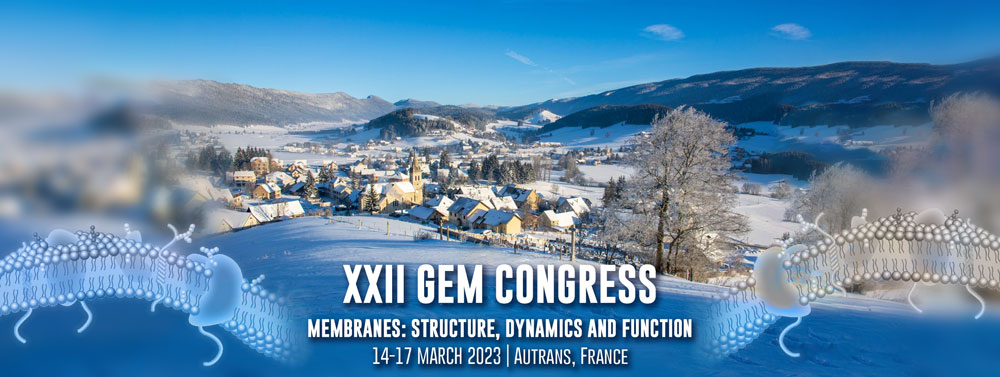Speaker
Description
Amyloid β42 (Aβ42) is predominantly found in the form of plaques in the brain tissues of Alzheimer's disease and is mainly responsible for cognitive dysfunctionality in Alzheimer’s. Aβ depending upon aggregation states Aβ42-monomer (M)/β-sheets/oligomer (O)/fibril (F), and amino acid length affects the model membrane mimetic systems [1-4]. The plasma membrane is the first biological structure encountered by Aβ42 and can play a vital role in Aβ42 fibrillation. Here, we have investigated Aβ42 fibrillation due to the unilamellar vesicles (ULV), mainly composed of neuronal phospholipids and sphingomyelin a physiologically relevant membrane, extracted from porcine brain tissues. The ULVs are characterized by dynamic light scattering (DLS) and Cryo transmission electron microscopy (CryoTEM). The hydrodynamic radius of ULVs was found to be 65±15 nm and diameter 90 nm, averaged over all the CryoTEM images, using DLS and CryoTEM respectively. The monomeric Aβ42 (Aβ42-M) prepared as described elsewhere [5] mixed with ULVs at 0.3w/v% and characterized by CryoTEM. It was found that the freshly prepared Aβ42-M does not affect ULVs bilayer remains intact. However, Aβ42-M strongly interact with the ULVs and aggregate to form Aβ42-fibril (F). CryoTEM images showed that Aβ42-F encapsulates the neuronal phospholipids ULVs and impairment of the ULVs bilayer was observed. Small angle X-ray scattering data showed that the Aβ42-F flattening of the bilayer peak indicates impairment of the ULVs bilayer. This suggests that Aβ42 has a strong association with neuronal phospholipids which can play important role in Aβ fibrillation.that Aβ42 has a strong association with neuronal phospholipids which can play important role in Aβ fibrillation.
[1] V. Rondelli, P. Brocca, S. Motta, M. Messa, L. Colombo, M. Salmona, G. Fragneto, L. Cantù, & E. D. Favero, Scientific Reports 6 (2016) 20997.
[2] C. Ricci, M. Maccarini, P. Falus, F. Librizzi, M. R. Mangione, O. Moran, M. G. Ortore, R. Schweins, S. Vilasi, and R. Carrotta, J. Phys. Chem. B 123 (2019) 631−638.
[3] M. Hirai, R. Kimura, K. Takeuchi, M. Sugiyama, K. Kasahara, N. Ohta, B. Farago, A. Stadler, and G. Zaccai, Eur. Phys. J. E 36:74 (2013).
[4] D. K. Rai, V. K. Sharma, D. Anunciado, H. O’Neill, E. Mamontov, V. Urban, W. T. Heller, & S. Qian, Scientific Reports 6 (2016) 30983.
[5] S.-C. Jao, K. Ma, J. Talafous, R. Orlando, M.G. Zagorski, Amyloid 4 (1997) 240–252.
| Session | Interaction lipids/polymers/membrane proteins |
|---|

